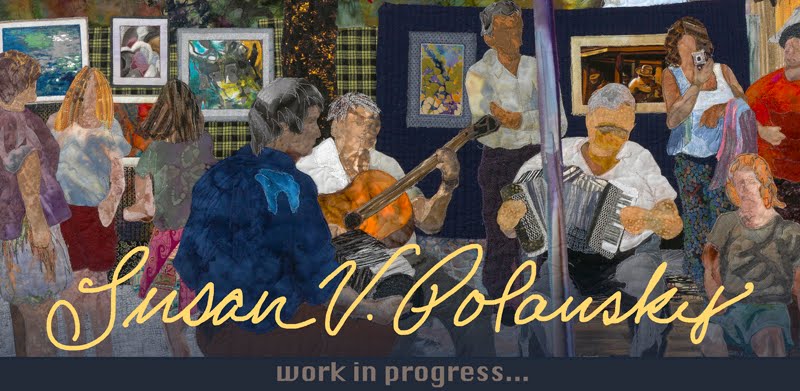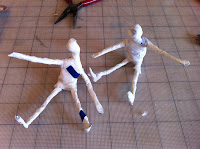A friend commented on my process, "Oy, what a lot of work!" I responded that it's not work if you love what you do. And I just happened to find the web site of Kirsty Hall, an artist who has this to say about process:
"People who aren’t working in a creative profession often think that what we do is easy, fun, glamorous or exciting. And it can be all of those things. But it’s also a time-consuming, brain-melting obsession that will eat your life.
It is not ‘five minutes, boom, you’re done, sit back and drink a martini’ – that is not how the creative process goes for even the most talented people. Techniques take time to learn and perfect. You make mistakes. Then you make bigger mistakes and have to start over. Even once you’ve learnt your craft, it’s twisty: you fret, you fiddle and things go wrong. You can pick away at a problem for months or years with no guarantee that you’ll ever crack it.
Sure, some people make it look easy but I’d bet my granny’s pension that they’re working hard when your back is turned. They’re dreaming their way into a role; they’re thinking about their sculpture on their lunch break; they’re drawing for hours every day." http://kirstyhall.co.uk/2010/05/13/enjoy-your-process/
Kirsty Hall's site has a resource page with a compilation of blog posts offering creative commentary and advice that I found interesting. I like to read what other artists have to say about creating art. When you spend so many hours alone obsessing over this little line or that tiny color nuance, it's reassuring to know there's others out there who do the same with their creative work. A self serving purpose of this blog is to write about my art to develop my vocabulary and fluency of description. Artful compositions don't always come easily, but working on the craft sure helps.













